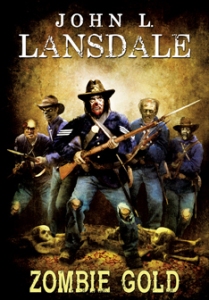Midian Unmade edited by Joseph Nassise and Del Howison
Tor (July 28, 2015)
 Two of Clive Barker’s most famous mythologies – the worlds of Hellraiser and Nightbreed – have proven to be rich playgrounds for other creators. In addition to film, both have been interpreted in comics and, now, anthologies. The world of the Cenobites was explored by several top genre authors in 2009’s Hellbound Hearts; now, with this week’s release of Midian Unmade, the Nightbreed get the same treatment.
Two of Clive Barker’s most famous mythologies – the worlds of Hellraiser and Nightbreed – have proven to be rich playgrounds for other creators. In addition to film, both have been interpreted in comics and, now, anthologies. The world of the Cenobites was explored by several top genre authors in 2009’s Hellbound Hearts; now, with this week’s release of Midian Unmade, the Nightbreed get the same treatment.
The Nightbreed first appeared in 1988 in Barker’s short novel Cabal. Like the movie Hellraiser, which Barker adapted from his novella “The Hellbound Heart,” the author was tapped to write and direct the film version of the book. Nightbreed managed to be both a faithful adaptation and something of a hot mess all at the same time, thanks in no small part to studio over-involvement. A long-clamored-for director’s cut of the movie was recently released, and now the Nightbreed are getting more attention with this new anthology.
All of these stories take place after the events of the book and film. SPOILER TIME: In short, the Nightbreed, a race of creatures with varying abilities, appearances and ferocity, had found a safe haven to live away from humans, a place they called Midian. A man named Boone finds his way to Midian, is “turned” into one of them, and unwillingly brings about the destruction of their sanctuary. As the surviving Nightbreed scatter, Boone, now Cabal, promises to find them a new safe place, where he will gather them together once again.
Now, that’s a natural place for follow-ups like these stories to take place, following different members of the Tribe as they try to make their way in a world that hates and hunts them; however, it’s also somewhat limiting. Many of the authors represented here were drawn to the themes of loneliness and longing to belong that Barker’s original work concentrates on, and while that makes for some powerful fiction, it also results in a sense of sameness that permeates the collection, especially throughout the first half of the book.
A handful of later stories stray from these themes, and a couple of those stand out as my favorites. C. Robert Cargill’s “I Am the Night You Never Speak Of” is a brutal tale of a Nightbreed who feeds on the sin of others, ultimately satisfying himself with the corruption of a human and the destruction of a fellow Nightbreed. “Wretched,” by Edward Brauer, is the disturbing, atmospheric story of an unhappy family, their lonesome friend, and the scary old man they rescue at sea.
There are several other memorable stories in Midian Unmade, many of which feature direct callbacks to the source material. If you’re familiar with names like Boone, and Baphomet, and Lylesburg, and Peloquin, and Decker, you’ll find plenty of material here to make you happy. Those coming into this collection without first-hand knowledge of the Nightbreed’s story need not worry; while it’s infinitely more rich and rewarding material if you’ve read the book or seen the movie, things are explained adequately enough (multiple times) to ensure that confusion won’t get in the way of your enjoyment.
While I would have loved to see more stories about the Nightbreed before they came to Midian, or while they were in Midian, rather than an overload of stories after Midian’s fall, I still believe Midian Unmade serves the source material and its creator well. Fans of Clive Barker, or of good dark fiction in general, will want to be sure to add this to their shelves.
 Zombie Gold by John L. Lansdale
Zombie Gold by John L. Lansdale Mark Morris continues his time-travelling, genre-smashing Obsidian Heart trilogy with The Society of Blood. Like any good trilogy middle child, Society is unencumbered by the need to set up plot points or tie up storylines; instead, it can simply take what’s been put into place and run wild until it’s thoroughly exhausted. And run wild it does, taking readers on a trip from Victorian times back to the modern world, with a plethora of ghastly murders, surreal villains and plot twists along the way.
Mark Morris continues his time-travelling, genre-smashing Obsidian Heart trilogy with The Society of Blood. Like any good trilogy middle child, Society is unencumbered by the need to set up plot points or tie up storylines; instead, it can simply take what’s been put into place and run wild until it’s thoroughly exhausted. And run wild it does, taking readers on a trip from Victorian times back to the modern world, with a plethora of ghastly murders, surreal villains and plot twists along the way.  In my
In my  Death comes easy in Bliss House, and it lingers.
Death comes easy in Bliss House, and it lingers. Even when confronted with the sheer bulk of The Stephen King Companion: Four Decades of Fear from the Master of Horror – over 600 pages, enough to rival several of King’s own doorstop novels – I went into it thinking, “There’s not going to be much here I don’t know already.”
Even when confronted with the sheer bulk of The Stephen King Companion: Four Decades of Fear from the Master of Horror – over 600 pages, enough to rival several of King’s own doorstop novels – I went into it thinking, “There’s not going to be much here I don’t know already.”
 In Stinger, Robert McCammon spins the relatively straightforward tale of a benevolent alien who crash lands in the small Texas town of Inferno. Unfortunately for that alien, and for the citizens of Inferno, there’s a second alien in pursuit of the first; a bounty hunter with far more aggressive tendencies. This simple storyline unfolds across one 24-hour period, and yet it takes McCammon more than 600 pages to tell his story.
In Stinger, Robert McCammon spins the relatively straightforward tale of a benevolent alien who crash lands in the small Texas town of Inferno. Unfortunately for that alien, and for the citizens of Inferno, there’s a second alien in pursuit of the first; a bounty hunter with far more aggressive tendencies. This simple storyline unfolds across one 24-hour period, and yet it takes McCammon more than 600 pages to tell his story. Another surprise in a book this size? The blistering pace. Again, let me draw a favorable comparison to The Border, which clocked in at nearly 500 pages that absolutely flew by. Even early in his career (Stinger was originally published in 1988), McCammon was a master at seamlessly weaving plot advancement and character building. There are many compelling characters with interesting side-stories in Stinger – the two young leaders of opposing gangs; the PTSD-suffering war veteran; the alcoholic father; the ineffectual sheriff, to name just a few – and when McCammon wanders off the path to examine their situations more closely, I doubt you’ll mind at all.
Another surprise in a book this size? The blistering pace. Again, let me draw a favorable comparison to The Border, which clocked in at nearly 500 pages that absolutely flew by. Even early in his career (Stinger was originally published in 1988), McCammon was a master at seamlessly weaving plot advancement and character building. There are many compelling characters with interesting side-stories in Stinger – the two young leaders of opposing gangs; the PTSD-suffering war veteran; the alcoholic father; the ineffectual sheriff, to name just a few – and when McCammon wanders off the path to examine their situations more closely, I doubt you’ll mind at all. Nell Sullivan is the kind of person you want to feel sorry for – but she doesn’t make it easy. She’s a withdrawn, timid mouse of a woman, drifting like a shadow through her workday and retreating each night into the safety of her apartment. She’s regularly dismissed, even picked on, by the women she works with, and her meager attempts to improve her lot in life go about as well as similar attempts did for Stephen King’s Carrie White.
Nell Sullivan is the kind of person you want to feel sorry for – but she doesn’t make it easy. She’s a withdrawn, timid mouse of a woman, drifting like a shadow through her workday and retreating each night into the safety of her apartment. She’s regularly dismissed, even picked on, by the women she works with, and her meager attempts to improve her lot in life go about as well as similar attempts did for Stephen King’s Carrie White. Over the last few years Subterranean Press has gotten heavily into the Robert McCammon business – and cousin, business is a-boomin’. In addition to releasing new works like
Over the last few years Subterranean Press has gotten heavily into the Robert McCammon business – and cousin, business is a-boomin’. In addition to releasing new works like  Two of Clive Barker’s most famous mythologies – the worlds of Hellraiser and Nightbreed – have proven to be rich playgrounds for other creators. In addition to film, both have been interpreted in comics and, now, anthologies. The world of the Cenobites was explored by several top genre authors in 2009’s
Two of Clive Barker’s most famous mythologies – the worlds of Hellraiser and Nightbreed – have proven to be rich playgrounds for other creators. In addition to film, both have been interpreted in comics and, now, anthologies. The world of the Cenobites was explored by several top genre authors in 2009’s